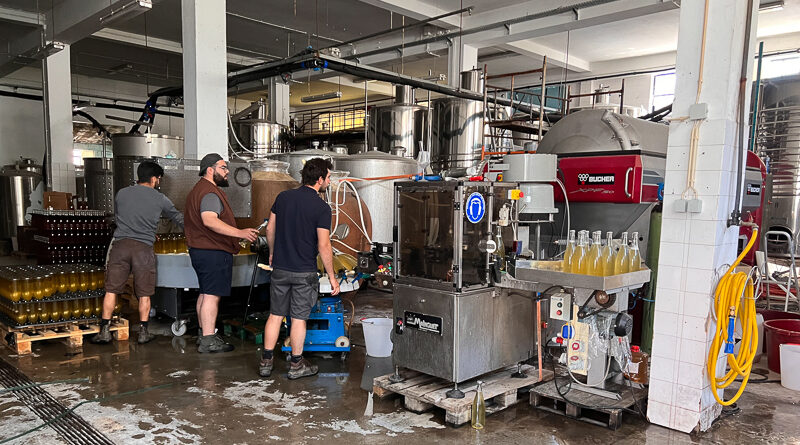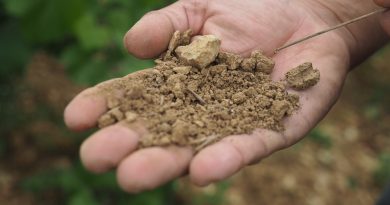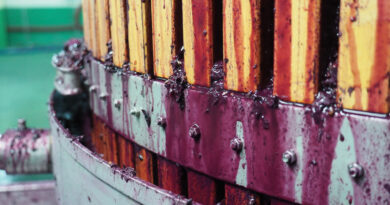Video: disgorging and bottling Pet Nat at Folias de Baco winery in Portugal’s Douro
Pet Nat is a popular style of sparkling wine these days. The name stands for Petillant Naturel, and the process it is made by is called the Methode Ancestrale. The idea is you bottle the wine before fermentation is finished, and then the remaining sugar ferments, creating one bar of pressure from the carbon dioxide for every 4 grams of sugar left in the wine before it was bottled. In an ideal world, that’s all you need to do. But it’s easier said than done. Often, the tartrates or other gunk left in the wine acts as a nucleation site for bubble formation, and then when the crown cap is removed the wine gushes. Sometimes you can lose half the bottle this way.
For this reason, it’s common to disgorge Pet Nat, and that’s what’s happening here in the Folias de Baco winery in Portugal’s Douro region (read more about them here in this write-up of a visit I made last week). This is the same process you might find in a Champagne cellar, although there’s a lot of manual action here that is often automated. The bottles have been stored in such a way that dead yeast cells and tartrates are collected in the neck, then the neck is frozen fast and the crown cap is removed. The yeast/tartrate plug is expelled, then the bottle is topped up, and a new crown cap is applied.






